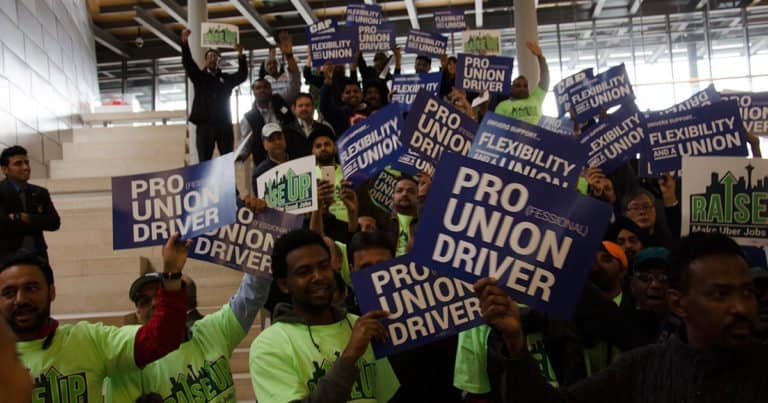Alexa Kissinger is a student at Harvard Law School.
Money, sex, religion, and politics. We all know these topics are taboo at the dinner table. However, not discussing one of these in the work place might be costing us – especially women – more than we realize.
Federal law has prohibited pay discrimination since 1963, but according to U.S. Census data, a woman working full-time only earns 79 cents for every dollar that a man earns. This means that a woman who works full-time over a 40-year period loses around $435,480 in lifetime income due to the wage gap. Put another way, the typical American woman needs to work 11 years longer than a man to make the same amount of money at a similar job. The numbers are even more disparate for women of color with African American women making 60 cents and Latinas making just 55 cents for every dollar paid to white, non-Hispanic men.
Before we dig into why transparency is a crucial part of the solution, let’s dispel a few myths:
- Wage inequality only affects women: In the United States, mothers are the primary or sole breadwinners in more than 40 percent of families, and more than 15.2 million family households are headed by women. When women make less, families make less.
- The wage gap exists only in industries where women self-select into lower paying jobs: Jennifer Lawrence and other Hollywood starlets aren’t the only ones making less than their male counterparts. Census data shows that across industries and within similar occupations, women are systematically paid lower salaries than men. For example, the median pay of a female lawyer is 83 percent that of a male lawyer; female education administrators earn 81.4 percent of men with the same title; women computer programmers make 86.6 percent as much as their male counterparts, and the list goes on.
- The wage gap is a short-term problem: If change continues at the same pace as it has over the last 50 years, economists predict women won’t see pay parity until 2059.
The case for transparency
The reasons for the gender wage gap are numerous and complex, but lack of salary transparency is one of the main hurdles women and people of color face when trying to uncover potential pay discrimination. Even though workers in most states have a legal right to discuss pay with each other, about half of private sector workers say employers discourage or even ban such talk, making it difficult to discover discrimination in the workplace. Contrasted with sectors that are more transparent about their employees’ pay where the gender wage gap is far smaller (11% in the federal government and 9.4% in unionized workplaces), lack of transparency is a huge problem.
Employers may not even realize their pay policies are discriminatory
When you think of pay discrimination, you might think of a penny-pinching boss who is deliberately paying women less because he knows he can get away with it. However, the reality is that many companies don’t even know their practices are discriminatory. Salesforce CEO Marc Benioff, for example, conducted a thorough review of his employees’ salary data and realized many women were being paid less than their male counterparts. After discovering the disparate trend, he committed to shifting to equal pay for equal work. Requiring companies to report income data will allow well-intentioned employers realize macro-trends they may not otherwise notice.
Some companies have pushed back on Salesforce’s efforts, saying pay transparency hurts morale, stirs resentment, and is an overly simplistic metric. However, a growing number of companies are realizing that sunlight is in fact the best disinfectant.
Transparency will help women better negotiate their salaries
On average, only 7% of women (even highly educated women) attempt to negotiate their salaries in contrast to 57% of men. Not negotiating your salary early and often can cost you more than $1 million in lost earnings over the course of your career, and in non-transparent negotiation situations, women typically receive about $10,000 less than similarly qualified men. Mandating salary transparency would eliminate the information asymmetry that prevents women from coming to the negotiation table fully empowered and prepared.
How do we make salary data more transparent?
Tackling the lack of transparency is going to require substantial policy reforms, a shift in workplace culture, and some potentially uncomfortable dinner table and workplace conversations.
Companies, not individual employees, should bear the burden of transparency
When film star Bradley Cooper found out his female co-stars were being paid substantially less than him, he vowed to fight the disparity by telling his female colleagues what he’s making before they ink a deal. Former Google employee Erica Baker tweeted about an internal spreadsheet she created where employees could share their compensation packages. Nearly 5% of Google employees shared their salaries, and Baker claims the information helped several employees to negotiate for larger salaries. Google did not seem too happy about this practice, and the Internet responded by calling her money hungry among other disparaging comments. Companies like Glassdoor.com and Salary.com are also making it easier for employees to know the fair market value of their jobs.
However, we don’t all have Bradley Cooper as a coworker, and these other patchwork systems are simply no substitute for comprehensive, employer-driven transparency.
Legislative changes are going to take time
While a comprehensive legislative solution is a long shot, the President and some states are stepping up.
On January 29, the Obama Administration proposed a new rule to address unequal pay practices by requiring companies with more than 100 employees to submit salary data by race, gender and ethnicity. The proposed pay data reporting requirement would cover more than 63 million employees, will help the government enforce equal pay laws, and provide better insight into the gender pay gap across industries and occupations. The president has also called on Congress to pass the Paycheck Fairness Act, which would update the Equal Pay Act and protect women from retaliation when they seek equal pay. Additionally, although progress at the state level has been tepid, California passed a law that puts the burden of proof on an employer to prove a wage gap between a male and female employee is justified by seniority or merit, ups transparency requirements, and requires companies to pay the same rate for “substantially similar” work.






Daily News & Commentary
Start your day with our roundup of the latest labor developments. See all
October 17
Third Circuit denies DOL's en banc rehearing request; Washington AG proposes legislation to protect immigrant workers; UAW files suit challenging government surveillance of non-citizen speech
October 16
NLRB seeks injunction of California’s law; Judge grants temporary restraining order stopping shutdown-related RIFs; and Governor Newsom vetoes an ILWU supported bill.
October 15
An interview with former NLRB chairman; Supreme Court denies cert in Southern California hotel case
October 14
Census Bureau layoffs, Amazon holiday hiring, and the final settlement in a meat producer wage-fixing lawsuit.
October 13
Texas hotel workers ratify a contract; Pope Leo visits labor leaders; Kaiser lays off over two hundred workers.
October 12
The Trump Administration fires thousands of federal workers; AFGE files a supplemental motion to pause the Administration’s mass firings; Democratic legislators harden their resolve during the government shutdown.